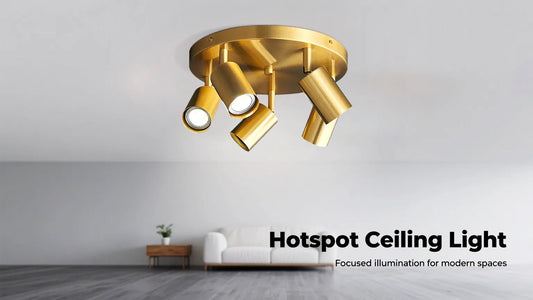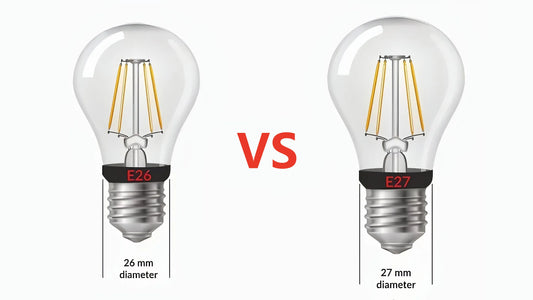A Guide to Choosing Lighting Fixtures
Choosing lighting fixtures is not only about the lighting effect of a space, but also affects the overall home atmosphere and living experience. Here is a comprehensive guide to choosing lighting fixtures, covering space requirements, types of fixtures, core parameters, and style matching, to help you quickly find the right lighting for your needs.
I. First, Clarify "Space Function": Different Areas Have Vastly Different Needs
The core function of lighting fixtures is to "adapt to space functions". It is more reliable to first understand the lighting needs of each area before choosing styles.
1. Living Room: "Main Light + Auxiliary Lights" Combination, Balancing Basic Lighting and Atmosphere
- Core Needs: Bright and uniform (basic lighting) + adjustable atmosphere (for parties, movie watching, etc.).
-
Recommended Combination:
- Main light: Ceiling light (for small apartments, saving space), chandelier (for large apartments, enhancing layering; note that the diameter of the lamp body should not exceed 1/4 of the living room width, and the height should not be less than 2.2 meters to avoid a depressing feeling).
- Auxiliary lights: Spotlights (to illuminate decorative paintings/ornaments), downlights (to supplement light in corners), light strips (hidden behind ceiling/tv cabinet to create soft background light).
- Pitfalls to Avoid: Do not choose overly complex crystal chandeliers (they accumulate dust and are hard to clean, and make small apartments look crowded).
2. Bedroom: "Soft and Low Stimulus", Reject Direct Light
- Core Needs: Soft light (aiding sleep) + local brightness (for getting up at night, reading).
-
Recommended Combination:
- Main light: Ceiling light (choose a frosted lampshade to avoid glare), low-saturation chandelier (1.5-1.8 meters from the ground).
- Auxiliary lights: Bedside wall lamps (for reading, avoiding taking up desktop space), night lights (for getting up at night without groping in the dark; choose warm yellow light with brightness ≤10lm).
- Pitfalls to Avoid: Do not install the main light directly above the bed (direct light in the eyes when lying down easily causes fatigue).
3. Kitchen: "High Brightness + Oil Resistance", Illuminate the Operation Area
- Core Needs: No shadows (see details clearly when cutting/cooking), oil resistance (easy to clean).
-
Recommended Combination:
- Main light: Recessed downlights (oil-proof, choose a waterproof rating of IP44 or above), panel lights (illuminate the whole area, choose a matte panel that is not easy to get oily).
- Focus lights: Light strips under the cabinet (illuminate the countertop to avoid hand shadows blocking when cutting vegetables).
- Parameter Requirements: Color temperature 5000K-6500K (cool white light, clear color rendering), brightness ≥300lm/㎡ (for example, an 8㎡ kitchen, total wattage ≥24W).
4. Bathroom: "Waterproof + Safe", Choose Lights by Area
- Core Needs: Waterproof and moisture-proof (avoid short circuits), local high brightness (washing/makeup).
-
Area-specific Lighting:
- Dry area (washbasin): Vanity lights (installed on both sides to avoid facial shadows, choose a color rendering index Ra≥90 to see makeup clearly), downlights (IP44 level).
- Wet area (shower area): Waterproof spotlights/moisture-proof ceiling lights (must be IP65 or above, fully splash-proof).
- Pitfalls to Avoid: Do not use ordinary lamps (easy to leak electricity in humid environments; look for the "waterproof rating IPXX" label).
5. Study/Work Area: "Focus + No Flicker", Protect Eyesight
- Core Needs: Uniform light (avoid light-dark differences), no flicker (no fatigue during long-term use).
-
Recommended Combination:
- Main light: Ceiling light (neutral light 4000K, brightness ≥200lm/㎡).
- Focus light: Desk lamp (choose one with adjustable angle to illuminate the desktop, color rendering index Ra≥90, flicker-free certification).
II. Understand "Types of Lighting Fixtures": Different Styles, Different Applicable Scenarios
| Type of Fixture | Characteristics | Applicable Spaces | Advantages | Notes |
|---|---|---|---|---|
| Ceiling Light | Close to the ceiling, saves space | Living room, bedroom, kitchen | Uniform lighting, easy to install | Choose thin models for small apartments (≤10cm thick) |
| Chandelier | Hanging type, with a sense of design | Living room, dining room, bedroom | Enhances style, rich layers | Be cautious if floor height <2.7m (may feel oppressive) |
| Spotlight/Downlight | Recessed, focused light | Living room (for decorations), corridor | Does not take up space, light is controllable | Spotlight angle adjustable (15°-60°) |
| Light Strip | Soft and bendable, strong decorative effect | Ceiling, cabinet, staircase | Creates atmosphere, fills dark corners | Choose low-voltage light strips (safe) with a transformer |
| Floor Lamp | Easy to move, local supplementary light | Living room corner, study | Flexibly adjustable, diverse shapes | Stable base (to prevent tipping) |
III. Focus on "Core Parameters": Don't Be Fooled by Merchants
1. Color Temperature (K): Determines the "Warmth/Coolness" of Light
- Warm yellow light (2700K-3500K): Warm and relaxing, suitable for bedrooms and dining rooms.
- Neutral light (3500K-5000K): Bright and clear, suitable for living rooms, kitchens, and studies.
- Cool white light (above 5000K): Refreshing, suitable for bathrooms and workrooms (do not use in bedrooms as it may affect sleep).
- Tips: Choose "color temperature adjustable" lamps (supporting 2700K-6500K adjustment) for more flexible scene switching.
2. Brightness (Wattage/Lumen lm): Not the Brighter the Better, Choose as Needed
- Wattage (LED lights): Choose according to the space area, formula: Wattage = Area (㎡) × 3-5 (for example, a 15㎡ living room, choose 45-75W).
- Lumen (more accurate): 1W ≈ 80-100lm, living room ≥300lm/㎡, bedroom ≥200lm/㎡, kitchen ≥500lm/㎡.
- Pitfalls to Avoid: Do not only look at wattage; inferior LED lights have false wattage labels. Prioritize the "actual lumen" parameter.
3. Color Rendering Index (Ra): Restores the True Color of Objects
- The higher Ra, the better (Ra≥80 is qualified, Ra≥90 is high-quality).
- Key areas to pay attention to: Kitchen (to see the freshness of ingredients), in front of the makeup mirror (to avoid makeup color difference), study (books do not fade).
4. Flicker and Blue Light: Protect Eyesight
- Flicker: Choose "flicker-free" lamps (aim the mobile phone camera at the light; no rolling stripes means it is qualified).
- Blue light: Choose "low blue light" certified lamps for children's rooms/studies (to reduce eye fatigue).
IV. Style Matching: Lighting is a Plus for "Space Beauty"
The style of lighting fixtures should be consistent with the overall style of the home to avoid being abrupt:
- Modern minimalist style: Choose ceiling lights with simple lines and metal chandeliers (mainly black/white/silver gray).
- Nordic style: Log-colored lamps, lightweight chandeliers (with fabric/rattan elements).
- Chinese style: Antique designs (palace lanterns, cloud pattern elements), warm yellow light + mahogany/copper materials.
- Light luxury style: Crystal/glass chandeliers, metal frames (gold/black), with simple carvings.
V. Practical Shopping Tips
-
Look at Material and Craftsmanship:
- Metal lamps: Choose aluminum alloy (rust-proof), copper (durable but expensive); avoid iron sheets (easy to deform and rust).
- Glass lamps: Choose tempered glass (shock-resistant); frosted glass is more advanced than bright glass and not easy to leave fingerprints.
- Fabric lamps: Can be used in bedrooms but not in kitchens/bathrooms (afraid of oil/moisture).
-
Smart Functions are a Bonus:
Support dimming and color adjustment (mobile APP/voice control), human body induction (for bathroom/corridor lights, which turn on when someone comes), timing switch (bedroom lights simulate sunrise to wake you up), improving convenience. -
Energy Saving: Prioritize "level 1 energy efficiency" LED lights (save more than 50% electricity compared to ordinary lights, with a lifespan of 10,000 hours+).
-
Installation and Maintenance:
- For complex lamps (large chandeliers), confirm whether installation is included (additional fees may be high).
- Prioritize easy cleaning: Ceiling lights are easier to maintain than chandeliers; glass/metal materials are more stain-resistant than fabric/crystal lamps.
Summary
The logic for choosing lighting fixtures is: First determine the needs according to space functions → select the appropriate type of lighting fixture → check core parameters (color temperature, brightness, color rendering index) → match the home style → pay attention to details (material, intelligence, maintenance). Avoid the trap of "only looking at appearance and not practicality", and you can choose lighting fixtures that are both useful and beautiful.



